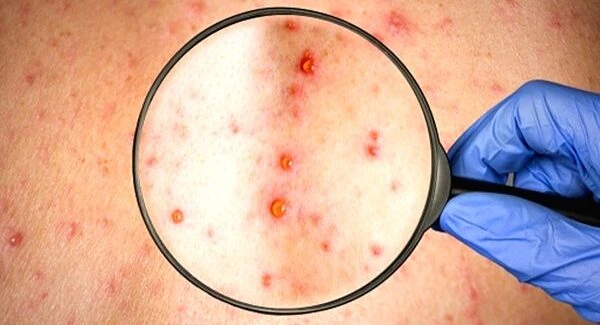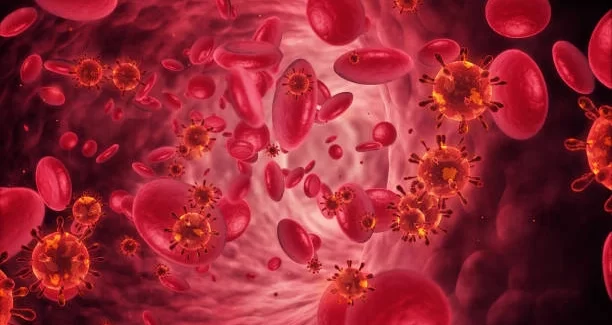Tuberculosis: Causes, Symptoms, Diagnosis & Treatment

Posted Date: March 25th, 2023
What is Tuberculosis?
It is a serious potentially bacterial disease which mainly affects the lungs. The tuberculosis bacteria developing from person to person even through small droplets in the air via cold, cough and sneezing. One person, who is more spending time with infected person, is higher risk of getting infected. In the developed countries, the tuberculosis infection starts increasing by 1985, because of HIV( The virus that causes AIDS).
TB is a major global health problem mainly in middle class and lower class countries. In the 2020, estimated 10 million people found ill with TB and 1.5 million people died with it. Because of HIV a person immune system weekend and it can’t fight with TB germs. After 1993, in united status it began decreasing because of strong control program. But it is still a concern.
Tuberculosis is developing by a bacterium which called mycobacterium tuberculosis. The bacteria usually attack lungs but it can attack any body part like kidney, spine and brain. TB is a serious illness which can be life threatening if it left untreated.
TB can be diagnosed by the tests which include skin test, blood test, chest X-ray and sputum test. A doctor may also prefer for physical exam and ask for the symptoms and medical history.
1. Latent TB infection: In this type of TB, bacteria remains in the body but no symptoms are visible in the patient. However if immune system is weak than the bacteria may became active it cause by TB disease. This type of TB mainly diagnosed by the skin and blood test.
2. TB disease: This is an active form of TB in which bacteria moves in the body and shows complete symptoms like fever, sneezing, cold, cough.
There are some other type of TB includes:
1. Miliary TB: It is a rare form of bacteria in which infection spread throughout your body and effect to multiple organs. This type of TB can be life threatening as well if not treated properly.
2. Multidrug resistant TB (MDR-TB):Antibiotics divide as First Line and Second line antibiotics. In this type of TB we use two most powerful first line antibiotics to treat the disease.This is most difficult treatment as compare to normal TB treatment and it requires longer treatment with second line antibiotic.
In some cases there is no symptoms at all in the body but some cases there is symptoms including coughing (sometime with flood), fever, weight loss, fatigue, night sweats.
These are the common symptoms of tuberculosis:
. Chest Pain
. Cough which lasts more than two weeks.
. Coughing with blood.
. Fatigue and Weakness.
. Fever and Chills.
. Night Sweats.
. Weight Loss.
. Loss of appetite.
. Shortness of breath.
. Swollen Glands.
It is very important to experience the symptoms of the TB because as we have mentioned, in latent Tb patient does not have any symptoms so in such cases bacteria present in throughout the body but patient not able to get the treatment on time and it affects the organs which is life threatening to the patient.
If a person experiencing the any of the above symptoms especially more than two weeks it is very important to see the doctor and get proper treatment. Doctor may ask for the some tests and after the examination, doctor will start the medication. Patient should complete the medication even if TB not showing the symptoms or disease is cured.
Risk Factor of TB
There are several Risk factors of TB which is following:
Weakened Immune System: People, who are weakened immune system due to some disease such as HIV/AIDS or certain cancers, are at higher risk of TB.
Close contact with infected person: TB has a higher risk of transmission from one person to another person through air, when infected person coughs, sneezes, talks. Living or working with infected person is the higher risk of developing TB.
Age: Older adults are the higher risk factor of developing TB because of weakened immune system or because of any other health conditions.
Malnutrition: It increases the risk of developing TB because malnutrition weakens the immune system.
Poverty and Overcrowding: Poverty and overcrowding is one the main risk factor of developing TB because poverty weakens the immune system because of poor diet and overcrowding makes easier to spread the virus.
Travel to High Risk Areas: Travelling to the high risk of areas where the number patient of TB is more such as South Africa and Asia increases the risk of infection.
It is not important that everyone who is infected or higher risk factor is developing TB. If a person concerns about their health or the risk factor so in that cases it is important to consult with the healthcare provider.
Tests For Tuberculosis
There are two method of Testing of Tuberculosis including:
Tuberculin Skin Test or Mantoux Test: TST is a process of Injecting purified protein derivative into the skin of the forearm. Wait for 48 to 72 hours and check the reaction. A positive TST means a person is infected with the TB bacteria but doesn’t mean he/she has an active TB disease.
Interferon-Gamma Release assays: It is a blood test that detects the release of Interferon-Gamma by white blood cells. It more accurate checkup of TB bacteria as compared to skin test.
If the test is positive, also further tests and evaluations are required to check whether the person is infected with latent TB or active TB disease. Doctor may also ask for X-Ray or other laboratory test.
TB test is not 100% accurate whether it is negative or positive result. TB vaccine is also the reason of the no accurate test result. It is very important to see the doctor if a person having any symptoms of TB before making any decision about the test.
Tuberculosis And Vaccination
Tuberculosis Vaccine named and developed by the French scientist. The name of vaccine is Bacillus Calmette Guerin (BCG).The BCG vaccine given to the young children in many countries mainly in the TB developing countries. The BCG vaccine is not 100% accurate but it is some protection against the TB bacteria. Because of Vaccine it is difficult to diagnose the TB positive or negative result mainly in skin Test. It is important to consult the doctor before thinking about the vaccination for you or your child.
Treatment of the Tuberculosis
TB treatment is the combination of the medication to cure the infection of TB. Medication is the combination of four drugs : isoniazid, rifampin, ethambutol and pyrazinamide should be taken daily for six month. These are the some basic treatments which patient should take care:
1.Medication should be taken by the patient as earlier as possible. It is very important to the patient as prescribe by the doctors. Treatment and medication may take longer time but it is important to complete the course suggested by the doctor even if the TB is cured.
2.Regular follow ups are important to check the process and to monitor the treatment. Needs to ensure that the TB is cured.
3.May isolation required for the patient to stop spreading the infections.
4.Proper medicines should be taken on time by the patient as suggested by the doctors.




